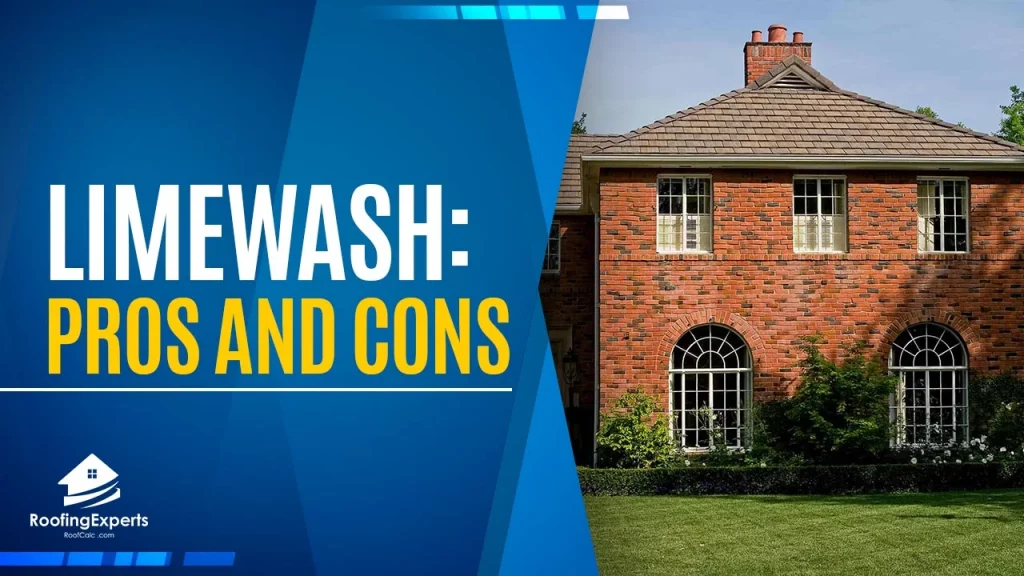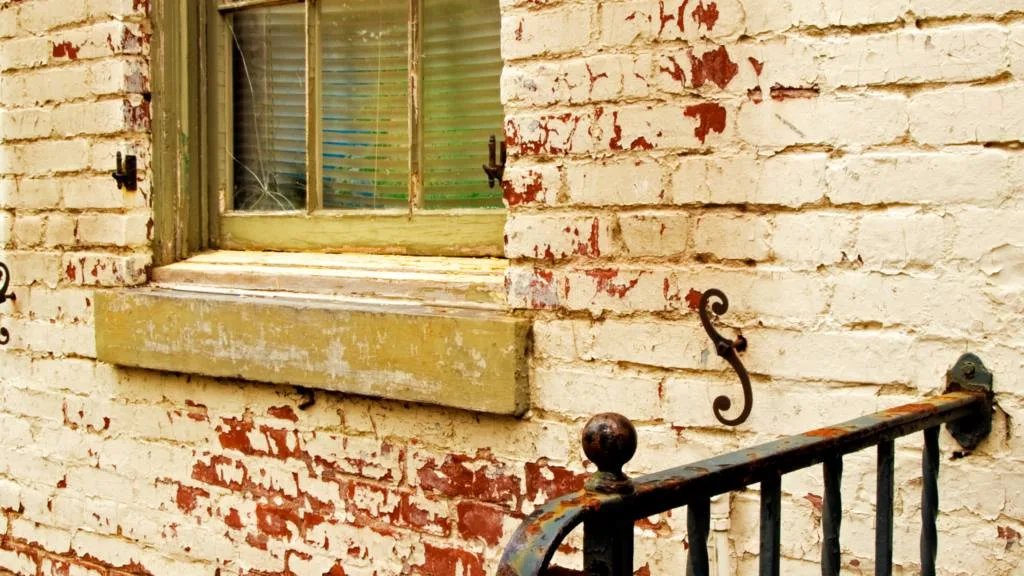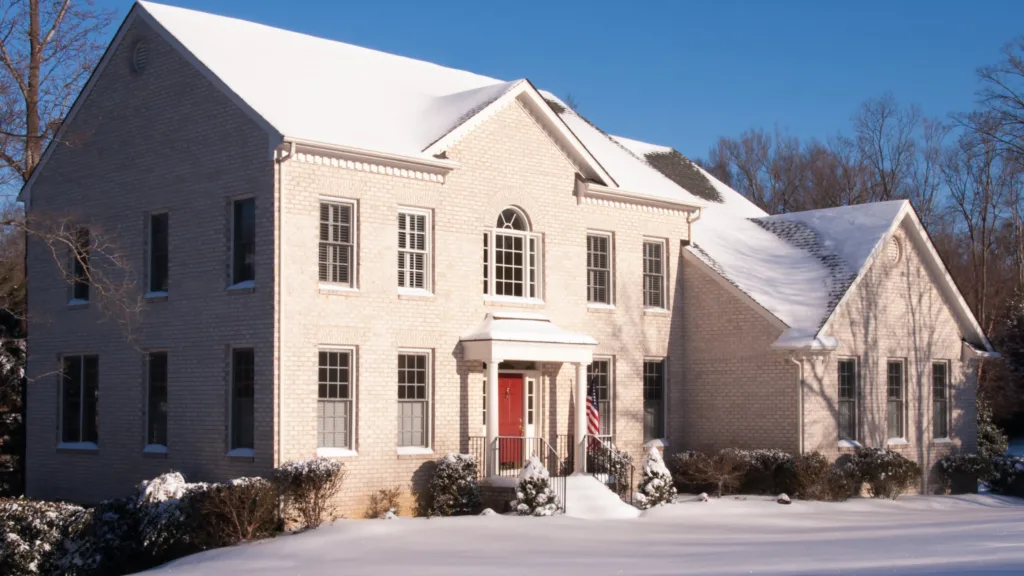
Limewash is a mixture of chalk, clay and water applied to the exterior walls of buildings. It is a traditional European treatment, and it has been used for centuries.
The result of limewash treatments are attractive mottled walls that have an extremely thin color variation from the original brick tone to white or off-white.
It is popular because a building with a treated exterior can be easily repainted over time as desired.
Limewash is a treatment that can be effective in both historic and new construction. When applying limewash to existing brick, it may take multiple applications of the mixture to get the desired color tone on the wall surface.
When first applied limewash looks like cream or white wash but it dries with an uneven finish that some people prefer over paint as it ages into a beautiful golden colour which can be described as old gold.
Who Uses Limewash?
Limewash is widely used in the United Kingdom and Europe.
It was historically popular with traditional thatched roof cottages; however, it has found new popularity among country houses (both old and new), manor homes, farmhouses, barns and other rural buildings.
Limewash is also popular in North America.
It was used extensively on homes in the northeastern US in the 18th and 19th centuries, but it has seen a resurgence recently among both homeowners who desire an off-white finish to complement their traditional architecture as well as people seeking contemporary design solutions for historic buildings.
Limewash has been used for centuries, but it is not without its downsides. It can take multiple coats to achieve the desired color tone on exterior walls and the finish may look dirty if not applied properly.
Limewash also requires regular maintenance with fresh applications every few years as dirt accumulates over time.

Pros and Cons of Limewash Brick Treatment
Limewash has certain pros and cons that must be considered when determining if it is the best exterior paint for your home.
Pros of Limewash:
- Limewash is less expensive than paint.
- It can be repaired by applying more limewash over the top of previous coats, which makes it very low maintenance and long lasting.
- Limewash has a very low environmental impact.
- Limewash is breathable and can help regulate the temperature of a building.
- It provides insulation against cold weather in winter, as well as coolness during hot summer days.
- Limewash also helps to protect buildings from rain damage.
- Limewash has a very versatile finish that can be painted over or left as is for an aged appearance.
Cons of Limewash:
- Limewash requires multiple coats to achieve desired color tone and it takes longer to apply than paint, which makes it more expensive in the long term.
- If applied improperly, dirt can accumulate over time and give the Limewash a dirty appearance.
- It is not resistant to moisture, which means it could affect any landscaping in an exterior wall’s base zone or destroy wood structures if applied directly onto them.
- Limewash may absorb heat in summer months, so it can be difficult to keep cool in warmer climates.
- Limewash has a limited color palette.
- There are various colors of limewash, however there is no way to change the base tone or add more white pigment so it will be difficult to get a brighter finish without painting over top.
Limewash is an attractive treatment that can provide many benefits for exterior brick surfaces. It is more expensive than paint, but it requires less maintenance and has a very low environmental impact.
How to Use Limewash on Brick Wall Exterior?
Limewash is applied in multiple coats to achieve the desired color tone. It can be used on new brick construction as well as existing masonry surfaces, but it may take several applications for the finish to look consistent and even across an entire wall surface.
For interior or exterior use; however, if using indoors make sure you use a breathable limewash.
Limewash does not require a primer coat, but it can be applied to a clean surface that has been lightly sanded and then cleaned with soap and water before being allowed to dry completely.
Apply the first layer of limewash in long even strokes from top-to-bottom or side-to-side.
Be sure to overlap strokes at the edges and leave an un-coated strip along window casings, door frames and corners in order to enhance your ability to clean off smudges later without affecting surrounding areas of painted brick.
Allow this first layer of limewash paint to dry before applying a second coat; however, if you are working in a dry climate or the top layer has been heavily diluted, proceed with applying your second coat before allowing the first to fully cure.
Allow at least 48 hours for each application and then allow one week of drying time between coats.
When using exterior surfaces, it is important to seal your brick first in order to prevent moisture damage and protect against extreme weather conditions such as heavy rain or snowfall.
Limewash protective wax comes in both spray on and brush on forms, so choose an option that is appropriate for the size of your surface.
Make sure you are using a breathable paint with limewash in order to prevent any water damage or mold growth within brick walls if it gets wet.
Limewash may require more than one coat depending upon how absorbent your bricks are.
What Are the Tips of Using Limewash as Treatment on Brick Exterior?
If you live in a dry climate or your top layer of limewash has been heavily diluted, proceed with applying the second coat before allowing the first to fully cure.
It is important to seal brick exterior first in order to prevent moisture damage and protect against extreme weather conditions such as heavy rain or snowfall.
You can use a breathable paint with limewash to prevent any water damage or mold growth within brick walls if it gets wet.
Limewash comes in both spray on and brush on forms, so choose an option that is appropriate for the size of your surface.
Limewash can be used on new brick construction as well as existing masonry surfaces, but it may take several applications for the finish to look consistent and even across an entire wall surface.
Allow at least 48 hours for each application and then allow one week of drying time between coats.
Is It Possible to Apply Your Own Limewash Brick Exterior Treatment?
Limewash is a very low-cost exterior treatment that can be easily applied by homeowners, but it is important to seal brick first in order to prevent moisture damage and protect against extreme weather conditions such as heavy rain or snowfall.
However, you should hire a professional if you have never used Limewash before because the process requires multiple layers of lime wash to properly build up the color and finish.
It’s best to hire a professional if you are using limewash on exterior surfaces because it can be difficult to control paint thickness, coverage area or even consistency of lime washes in different weather conditions.
Bricks are durable and strong but they can’t withstand an onslaught from Mother Nature forever.
You need to pay attention to any cracks that form so you don’t risk getting water intrusion behind your bricks which will lead them to rot faster than normal.
It may be time for a new coat of paint on your exterior if there is cracking, peeling or flaking going on with the existing one.
If you’re looking for a way to make your home look better without having to spend thousands of dollars, limewash brick exterior treatments are the perfect solution.
The blog post has provided you with all the information necessary to make a decision. Hopefully, this article helped in some way!


